I'm trying to use an L298N and an Arduino UNO R3 to drive a bipolar stepper motor.
To simplify things, I'm just trying to get a 12v output from either output-1 or output-2 of the l298 (then I can write up the 2nd h-bridge in the l298 the same way and be able to drive both motor coils).
I'm only getting ~130mv from output-1 and 140mv from output-2 (measured between the power supply ground wire and output-1/output-2). The motor is a 12v motor, but I've been able to drive it with an l293 which provides only 6v.
I am getting 5v on the logic supply voltage pin and ~4v on the enable pin (using analogWrite(3, 200) - tried with the enable pin connected to either the analog pin 3 or the digital pin 3 (labeled pwm)).
I have measured supply voltage to be 11.85v (12v power supply). I have followed the wiring/code from here and here (using same arduino code, but they got it to work, and I can't).
I have tried connecting the Current Sensing A pin to the power supply ground as suggested on the 2nd web page.
I have double checked that I have wired it up the same way. I've tried everything on both web pages and the few other pages I can find about building a circuit with an l298n and an arduino and I'm out of ideas about what to try next.
Is there anything I can do?
Here's a picture of what I built:

